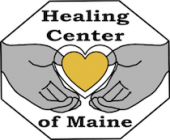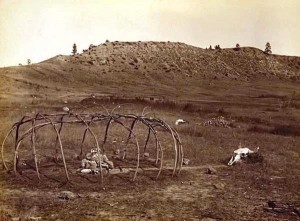“Coyote Medicine” is a fascinating chronicle of Lewis Mehl-Madrona’s pursuit of a traditional medical education juxtaposed against his apprenticeship to Native American healing. He shares in this book his journey of discovery in two separate worlds, each of which claims healing as its ultimate objective. As the story unfolds we discover two very different approaches to healing.
I personally have always had a strong affinity and respect for Native American culture and spirituality. I have read several other accounts of Native American healing practices and was spellbound by this detailed narrative. While many of us have a cursory knowledge of the “sweat lodges” used by Native American, Madrona grants us a front stage pass to these powerful healing rituals. Many may discredit the plausibility of real healing occurring through such ceremonies but I don’t because the sweat lodge ritual contains many healing techniques supported by scientific research. The elements I recognize as research proven techniques in healing include;
- The healer forms a personal relationship with the patient prior to the ceremony
- Friends and relatives participate in both the construction of the sweat lodge and in group prayer during the ceremony
- Participants in the sweat lodge invoke a higher power in the healing
- Metaphorical storytelling is used in relation to the illness
- Purification of the body, mind, and spirit
- Absolute belief in the cure
What a dramatic contrast to traditional medicine where you are typically rushed through office visits, and often times see a doctor or PA who you’ve never met before! I believe the effectiveness of the sweat lodge ceremony is found in the mind/body connection. Changes in thought elicit physiological changes in the body.
What follows are several direct quotes from articles I found documenting the healing power of the mind/body connection and further discussion of the sweat lodge healing elements. The research explains how the techniques of the sweat lodge ceremony can invoke healing.
The healer forms a personal relationship with the patient prior to the ceremony
Absolute belief in the cure
From a study by the National Institute of Mental Health: “ …researchers videotaped doctor-patient interactions during clinical visits and then showed these videotapes to expert raters …………. raters were able to make strikingly accurate predictions regarding who would go on to get well and who wouldn’t, regardless of the treatment they were receiving. ……….. having a good therapeutic relationship between doctor and patient turned out to be more powerful in promoting recovery … than whether one got an active treatment or placebo. …. Patients who showed a strong and positive emotional connection with their doctors were far more likely than others to improve during the study. But what the doctor felt and believed was also important. ….. if a doctor believed that the patient would improve, he or she was more likely to do so than if the doctor did not radiate this type of positivity. These findings have been replicated many times over in the intervening years, really highlighting the simple… fact that a patient’s relationship with his or her clinician can be itself a powerful source for sickness or healing. ……… Similar patterns are known to occur in the treatment of almost every imaginable disease, mental and physical. If researchers discovered a medication with this much therapeutic power it would be huge news and earn untold billions per year in profits.”1
Participants in the sweat lodge invoke a higher power in the healing
From a study done at San Francisco General Hospital: “One of the most quoted scientific studies of prayer was done between August of 1982 and May of 1983. 393 patients in the San Francisco General Hospital’s Coronary Care Unit participated in a double blind study to assess the therapeutic effects of intercessory prayer. Patients were randomly selected by computer to either receive or not receive intercessory prayer. ……..………. The patients who had received prayer as a part of the study were healthier than those who had not. The prayed for group had less need of having CPR performed and less need for the use of mechanical ventilators. They had a diminished necessity for diuretics and antibiotics, less occurrences of pulmonary edema, and fewer deaths. Taking all factors into consideration, these results can only be attributed to the power of prayer.”2
Friends and relatives participate in both the construction of the sweat lodge
and in group prayer during the ceremony
Redford Williams, Director, Behavioral Medicine Research Center at Duke: “Back in 1992 we published a paper in JAMA that clearly documented this, showing that heart patients with a spouse, a confidant or both had a 5-year mortality rate of only 18 percent, compared to only 50 percent in those with neither spouse nor confidant.”
David Spiegel, Professor and Associate Chair of Psychiatry & Behavioral Sciences at Stanford: “Numerous studies have shown that social isolation is associated with increases in all-cause mortality risk to the same degree as smoking or high cholesterol levels. ……… We are social creatures, and we manage stressors better when we are not alone with them”3
Purification of the body, mind, and spirit
The “sweating” as a result of the sauna-like environment of the sweat lodge rids the bodies of toxins. The healer works to detox the mind and spirit of the patient by forming a relationship with the patient. In the midst of that process the healer will ask the patient to delve into their psycho-social environment and to explore its implications on their illness. This process is well detailed in the book.
Metaphorical storytelling is used in relation to the illness
Native American storytelling is something we’re all familiar with. I never really understood how it was being used in healing ceremonies until I read this book. Part of the reason the healer needs to form a personal relationship with the patient is to be able to determine which stories most effectively speak the patient’s condition. This is an identical method to guided imagery which has been used effectively for years as an adjunct to traditional treatment.
As an example, here are the results of one study on seriously ill patients: “Eighty women undergoing multimodality treatment for large (>4cm) or locally advanced (T3, T4, Tx, N2), breast cancers participated in a randomized controlled trial to evaluate the immuno-modulatory effects of relaxation training and guided imagery. Significant between-group differences were found in the number of CD25+ (activated T cells) and CD56+ (LAK cell) subsets. The number of CD3+ (mature) T cells was significantly higher following chemotherapy and radiotherapy, in patients randomized to relaxation and guided imagery. Using a median split, women who rated their imagery ratings highly had elevated levels of NK cell activity at the end of chemotherapy and at follow-up. Relaxation training and guided imagery beneficially altered putative anti-cancer host defenses during and after multimodality therapy. “4
I find it fascinating that this ancient ritual encompassed so many proven healing techniques!
Written by Peter Wright
Photo 1 – White Buffalo Calf Woman Twin Deer Mother photos. (Photographer). (2009).Spirit of the Lake People. [Web Photo]. Retrieved from https://picasaweb.google.com
1 Dr. Charles Raison, “The healing power of the doctor-patient bond”, http://thechart.blogs.cnn.com/2011/05/03/the-healing-power-of-the-doctor-patient-bond/
2 Debra Williams, D.D. ,”Scientific Research of Prayer: Can the Power of Prayer Be Proven?”,http://www.plim.org/PrayerDeb.htm
3 ABC News, “Can the Presence of Family and Friends Help You Heal?”, http://abcnews.go.com/Health/gabrielle-giffords-long-road-recovery-presence-family-friends/story?id=12611864
4 “Eremin, O., Walker, M. B., Simpson, E., Heys, S. D., Ah-See, A. K., Hutcheon, A. W., Ogston, K. N., Sarkar, T. K., Segar, A., &Walker, L. G. (2009). Immuno-modulatory effects of relaxation training and guided imagery in women with locally advanced breast cancer undergoing multimodality therapy: a randomized controlled trial. Breast, 18(1), 17-25., http://www.missionhospitals.org/integrativehealthresearch
Latest posts by Peter Wright, NTP, CGP (see all)
- Dehydrated Broth – Making It Easy to Drink Broth Every Day! - March 11, 2017
- Lose 10 lbs DURING the Holidays - November 19, 2016
- Finding Good Oils - February 7, 2016



No comments yet.